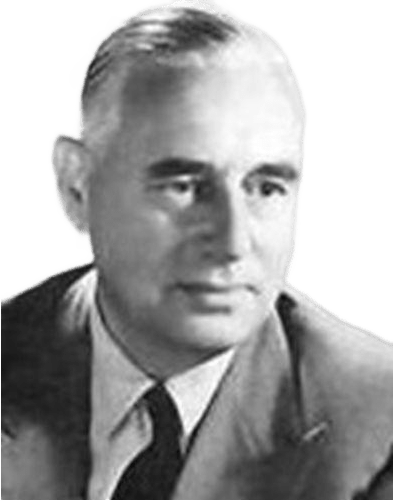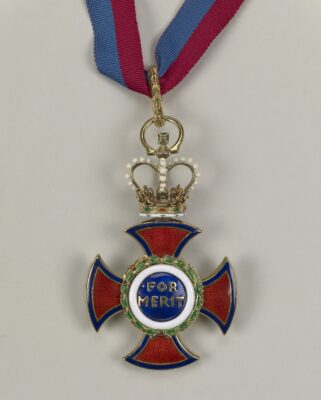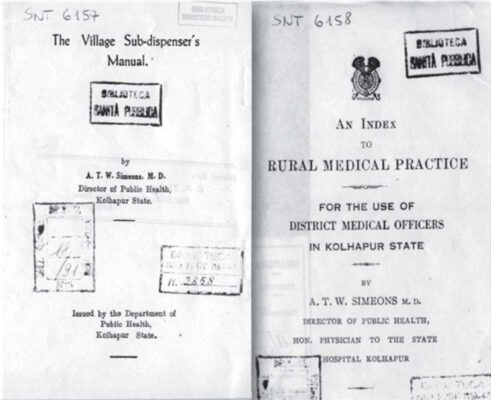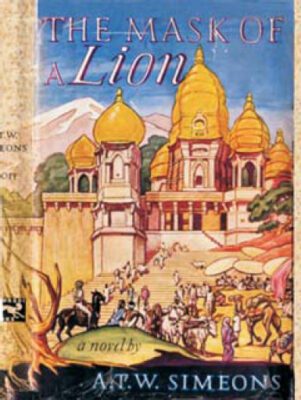Dr. Albert T.W. Simeons

Dr. Albert T. W. Simeons…who was this man?
We’ll attempt to give you a mini bio in Dr. Albert T. W. Simeons here. You’ll find information on this page that you’d have a hard time finding elsewhere!
- Dr. Albert T.W. Simeons Early Years
- Education and Early Work
- Red Cross Order of Merit
- Dr. Albert T.W. Simeons Early Years in India
- Colombo, 1935
- World War Two Arrives
- Satara, 1941-1943, The Parole Camp
- The State of Kolhapur, 1943-1947
- Dr. Simeons The Author
- The Final years in India.
- Dr. Simeons in Rome, Italy.
- The Foundation for The hCG diet
- The Passing of Dr. Albert T.W. Simeons
- Dr. Albert T.W Simeons Summary
Dr. Albert T.W. Simeons Early Years
Albert Simeons was born in London, England in 1900. An exact date cannot be found.
He was born to parents that had immigrated to England from Germany, not long before his birth.
He was brought up partly as a traditional Brit, but also with a German upbringing.
When he was a teenager, he returned to the country where his parents were born; Germany.
He even served in the German army during the final years of World War One, but in a role where he would not see any combat.
Education and Early Work
After the war, he studied at the prestigious University of Heidelberg and obtained his medical degree there. He graduated Summa Cum Laude, earning among the highest grade percentage among his peers.
He then went to Switzerland to study more about endocrinology, the science of hormones and endocrine glands and organs. Hormones are basically messengers that travel to different organs and body parts through the blood stream.
Returning to Germany from Switzerland, he worked in a surgical hospital in Dresden. Still, his curious fascination with leprosy, dengue fever and continued to grow.
He soon left Dresden to pursue Tropical medicine studies at the renowned Bernard Nocht Institue in Hamburg Germany. During his time studying tropical medicine, he was, at one time, situated in Africa for a period of 2 years, gaining hands on experience with many diseases, in particular, malaria.
Red Cross Order of Merit


1931, Dr. Simeons was awarded the Red Cross Order Of Merit by Queen Consort Mary, the wife of then King George V of England for his work with malaria.
The medal shown to the right is not the actual one recived by him
The medal in this image is for male recipients, and was to be worn around the neck, like a necklace
Female recipients received one that was designed as a pin to be placed on their lapel.
There can only be 24 recipients of this medal alive at any given time. So it’s quite a distinguished award!
Dr. Albert T.W. Simeons Early Years in India
In September of 1931, Dr. Albert T.W. Simeons arrived in Bombay (present day Mumbai) and set up his own clinic.
This was not unheard of as there were many doctors practicing in Bombay at the time of German and Austrian descent, many of them Jewish.
Dr. Simeons practice flourished as the elite and well to do of Bombay seemed to have a preference for foreign trained specialists.
His patients allowed him to practice his theories involving nutrition, endocrine and psychosomatic disorders.
Colombo, 1935
Dr. Albert T. W. Simeons traveled to Colombo, the capital city of Ceylon (now known as Sri Lanka) to work with a deadly epidemic of malaria.
He used the drug Atrebin as a mass treatment to battling the raging disease.
During this time, he still maintained his clinic in Bombay.
World War Two Arrives
In September of 1939, Britain declared war on Germany. This had a profound effect on Dr. Albert T. W. Simeon’s career.
At the time, India was under British Rule. They immediately enacted the “Enemy Foreigners Order 1939” and within hours, were rounding up German residents of Bombay.
These foreigners, including Dr. Simeons and his wife, were sent to numerous internment camps throughout the province.
There are confidential documents at The British Library that highlight the Central Government in India’s concerns about Dr. Simeons and his wife.
Of note was his service in the German army during WW1, his failure to apply for British nationally Status when he arrived in India (as so many others had done) and questions about his wife’s loyalty to India and Britain.
His protests that he was thoroughly British fell on deaf ears. His movement and ability to practice were dictated by the Indian Government.
Satara, 1941-1943, The Parole Camp
Dr. Albert T. W. Simeons was appointed to be in charge of the hospital of the parole camp for German families at Satara, the southwest Bombay province in 1941.
Here, along with other German families, he could be watched by the Government of India and his movements controlled. He also provided medical services for German families at very little cost to the government.
However, policy changes in 1943 resulted in the relocation of many of the inmates. Dr. Simeons was forced into idleness and complained about the loss of income.
As the government thought of ways to use his medical knowledge, a suggestion was made to employ him as a malariologist at a camp for Polish Inmates. But the Polish inmates said no way! Under no circumstances would they allow a German born doctor and his alleged pro-Nazi wife work at a Polish inmate camp
The State of Kolhapur, 1943-1947
In 194, Dr. Simeons was suggested to consult for an ailment suffered by Maharani Tarabai, who held a high political position in the Maratha Princely State of Kolhapur.
She was so impressed by his skill, that she petitioned the authorities of Bombay and Delhi to appoint him as “Director of Public Health and Physician in Chief for Kolhapur State.
At the time, the state of the Public health organization was quite pimitive and it was believed Dr. Simeons could bring vast, wide spread improvement.
The State agreed and unanimously voted to offer him this new position, should he accept.
There was however concern form the Political Department in Delhi. They were worried that Dr. Simeons, still considered a German National, would exploit visits to Bombay and attempt to influence government officials in an attempt to gain permanent residency in India.
After deliberation, his employment was sanctioned with a few rules. He and his wife were allowed to travel anywhere within India, but had to give the Kolhapur Police 24 hours’ notice. Dr. Simeons was not allowed to take any part in any Politics. He was to avoid any political conflict. He was to report directly to the Prime Minister and he was allowed to open a private practice again.


Although there was much tension, his 4.5 years in Kolhapur were quite productive.
He began planning healthcare programs for the poor in rural areas.
He was almost immediately confronted with an epidemic of bubonic plague in the province. Dr. Albert T. W. Simeons calmed things down and developed measures that combined sanitary measures with drug treatment.
He also set up the system of “sub-dispensing” in rural areas. In effect, this practice took educated people, like school teachers, and made them low level health practitioners.
They were trained to dispense information and medicine for a variety of ailments, but were not allowed to portray themselves as doctors. If a patient had issues outside of the scope of their training, they were referred to actual doctors.
This system saved thousands of lives and money.
Sub dispensers were paid a very small yearly salary and patients paid a very small amount for the drugs. Doctors were saved the time of dealing with these little things and could concentrate on those truly in need.
Dr. Simeons wrote a handbook for these practitioners to follow.
He also was instrumental in bringing “western” forms of treatment through drugs into the area.
His time in India brought huge change for public health and he’s looked upon as one of the fathers of Public Health care in India.
Dr. Simeons The Author


Dr. Simeons is credited with writing an astounding 25 works in 107 publications and in 7 languages and 1,122 library holdings.
In 1952, Simeons published his first fiction novel, “The Mask of a Lion” in both Britain and The USA.
It’s based on his experiences treating leprosy in India over the years. It follows the life of a successful small businessman who is inflicted with leprosy and loses everything.
He’s sent to live in a leprosy colony (based on a park in India were lepers were sent) where lepers till their own fields, sell their produce and earn a living.
The man eventually tries some new drugs and is cured, then returns to be re-united with his faithful wife and children.
In 1954, Dr. Simeons Published Pounds & Inches a New Approach to Obesity. An informational guide for other doctors around the world based on his hCG diet protocol. It’s still in publication today!
In 1961, he published Man’s Presumptuous Brain: An Evolutionary Interpretation of Psychosomatic Disease. This was based on his work and experience with psychosomatic disorders.
1965 saw his second fiction novel, Ramlal, the story of a young Indian boy who could talk to the animals. It was considered a classic fairy tale story, with illustrations in the book done by Robert Shore.
In 1968, his near lifelong interest in nutrition came out in his book Food: Facts, Foibles & Fables: The Origins of Human Nutrition


The Final Years in India
By 1947, the war in Europe had ended as did British Rule of India.
No longer under the control of the government, Dr. Simeons returned to Bombay and resumed private practice.
In 1950, Dr. Simoens left India for good and moved to Rome, Italy.
Dr. Simeons in Rome, Italy
In 1950, Dr. Simeons, with his wife and children, moved from India to Rome.
It was here that he gained world renown for his hCG diet, while working at the Salvador Mundi International Hospital.
The Foundation for The hCG Diet
The hCG diet protocol was based on his expertise in hormones (hCG is a hormone,) and his earlier work in India, beginning in 1931. He was constantly seeing malnourished pregnant women giving birth to full term babies that were normal weight.
Dr. Albert T. W. Simeons was also working with pre-pubescent males who were suffering from Froelich’s Syndrome, which slowed the growth of the gonads while adding massive weight to the body. He called these young males “The Fat Boys.” They were suffering from low testosterone. As hCG was known to boost testosterone levels, they were given hCG injections. Not only did the hCG help in their achieving puberty properly, it also reduced adipose fat to a large degree.
He also discovered that hCG played a huge role in pregnancy. Elevated levels in a pregnant female helped turn the adipose fat into fuel to be used by the body. The full term babies were coming out normal, even though their mothers were starving because the mothers’ body fat was providing the “food” to keep the baby growing normally!
Publishing The hCG Diet
While in Rome, he operated an early style of weight loss clinic. But only the Elite and Upper class could afford to see him. HCG injections at the time were very expensive and not something the average person could afford. Soon, Hollywood stars came to see him and went on the diet under his supervision.
Dr. Simoens was getting so much attention for his diet, that doctors from all over the world were contacting him, or coming to Rome to learn about the diet from him.
Soon all the questions about the diet became too much, in 1954, he wrote and published “Pounds and Inches: A New Approach to Obesity” in an effort to get the information out en masse so he could get back to spending all of his time treating people.
Although the diet wasn’t published until 1954, he’d been using it in treatments since the early 1930’s. Almost 100 years ago!
The Passing of Dr. Albert T.W. Simeons
After a storied life in medicine, Dr. Simeons passed away in Rome in 1970. His wife passed away in 1985.
They are buried together in Rome, at a Protestant cemetery, very near the graves of the great poets Percy Shelley and John Keats.
Dr. Albert T.W Simeons Summary
As you’ve seen, Dr. Simeons led quite the life!
Well educated with medical specialties in hormones and nutrition, the creator of public health care in rural India for the poor, author of numerous published books, both fiction and medical, and recipient of The Red Cross Order of Merit!
It’s hard to understand why such an accomplished doctor who achieved so much and helped so many lose weight can be frowned upon by main stream physicians.
But once you’ve tried the diet, or talked to those who have and have followed the basics of his protocol, you’ll understand that it really works!

